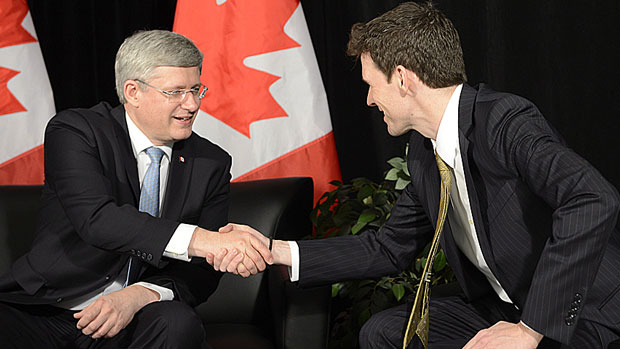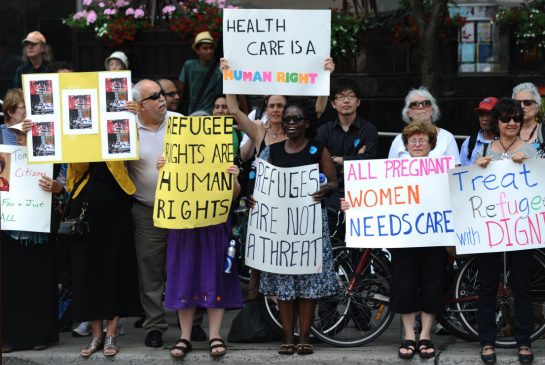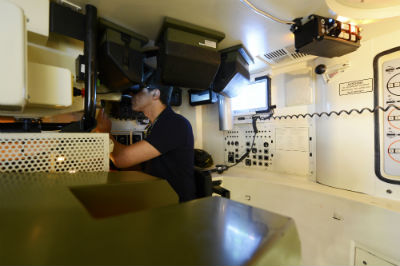During the last federal election, the Conservative campaign pledged to create a religious freedom branch within the Department of Foreign Affairs, citing the continued persecution of religious minorities abroad. Yet upon re-election, little mention was made of the proposed initiative. Now, nearly two years later, Stephen Harper’s administration made good on their promise with the February 18th appointment of Andrew Bennett to the role of ambassador of the Office of Religious Freedom.
Yet it was not the appointment of Bennett (an academic and public servant who has previously worked for the Privy Council, and by all accords is a suitable candidate for the ambassador role) that has caused a media firestorm. Instead, the discussion relates to the Office of Religious Freedom itself. While many had begun to chalk the initiative up to failed campaign promises, now that the Office has a leader at its helm, questions abound over what the organization will look like, what operations it will pursue, and what the initiative will mean for Canada’s reputation at home and abroad.
Incomplete Information
The listed mandate of the Office of Religious Freedom is a noble one – to “promote freedom of religion and belief, consistent with core Canadian values such as freedom, democracy, human rights and the rule of law”, to “[protect] and [advocate] on behalf of religious minorities under threat” and to “[promote] Canadian values of pluralism and tolerance abroad”. Unfortunately, though, the announcement has come with very few details on how the Office will carry out these, by all measures, altruistic goals. We know that the Office will operate within the Department of Foreign Affairs, yet John Baird (the Minister of Foreign Affairs) has provided little insight into what types of initiatives the branch will undertake (Will matters of immigration fall under its scope? Will the office act as a researcher on persecution, or pursue active intervention? Will it work alongside international bodies in their overseas efforts, or unilaterally?). Baird has remained tight-lipped about how the counsel arrived at its budget recommendations, about what role it foresees the Office’s five-member staff playing, and about the planning process that led to the development of this new Office of Religious Freedom.
In a series of consultations with religious leaders and notable figures held in Ottawa in early February, Baird closed the meetings off to the general public and to media officials. The meetings also did not include secular organizations (prompting concern that “non-believers” might not equally benefit from the Office’s protection), and they did not include the presence of human rights organizations — who, arguably, are some of the best suited actors in dealing with abuse of rights. Alex Neve, head of Amnesty International, felt slighted by the lack of inviation and questioned the Office’s ability to handle the complications and conflicting dynamics associated with religious freedom. For example, he pointed to the fact that “religious freedom can have a ‘contentious relationship’ with other crucial human rights concerns such as women’s equality, the equality of gays and lesbians, and freedom of expression”. How will the Office grapple with the inevitable conflict that arises when religious freedoms impede on another individual’s human rights? If we have a specific religious freedom office, does that imply that this right will be protected above all others?
Conservative opposition has even made accusations that the initiative was not fully thought out by Harper’s administration, and that it has had less to do with ensuring peace abroad and more to do with ensuring Conservative votes in the 2011 federal election. News of the intention to create an Office of Religious Freedom was first announced by Bob Dechert, the incumbent Member of Parliament for the Mississauga-Erindale riding, during his election campaign. Critics noted that Dechert’s riding carried a high population of ballot-wielding Coptic Christians – one of the three persecuted religious groups that were initially cited by the Conservatives as reason for the need for such an office. Charges that the initiative is simply a ploy to attract votes from ethnic minorities and recent immigrants, a voter base that the Conservatives do not traditionally fare well with, have also been made.
Money Woes
Then, there is the issue of funding allotment. The Office of Religious Freedom has been given funding of $5-million a year over four years, which includes a meager $500,000 budget for operations (apart from its operations budget, there has been no disclosure on how the Conservatives plan to spend the remaining funds for the Office). When “promoting Canadian values of pluralism and tolerance abroad”, concerns abound over how far this budget will stretch and if it will be able to meet its stated goals.
The price tag of such an initiative comes under further scrutiny given the heavy austerity measures that the Conservative government undertook over the last few years in order to reduce Canada’s deficit. In the 2012 federal budget, $319-million was slashed from the Canadian International Development Agency – a cut which represents an 8% reduction in CIDA funding, a devastating set-back for the organization that manages the bulk of Canada’s overseas development aid (ODA). Even without the 2012 cuts, Canada has already fallen drastically behind on its ODA. By 2015, it is projected that aid funding will have fallen to 0.24% of gross national income – well below its 0.7% United Nations Millennium Development Goal. One can’t help but wonder if it is the right move to divert funds away from our ODA in order to begin an initiative with a much smaller scope and budget.
Stephen Harper’s Conservative government also controversially withdrew funding entirely from many development agencies, including the Rights and Democracy office. This particular organization, which was formed to encourage democracy and monitor human rights, found itself on the cutting room floor in April 2012 after the government decided to absorb the office’s mandate into the Department of International Affairs and Foreign Trade (the very same Department that will now oversee the Office of Religious Freedom). The move has caused uproar by many supporters who argue that an office of human rights within the Department would not be able to operate as effectively and critically as an independent body — it is yet to be seen if an office for religious freedom operating within the Department will be able to combat this assertion.
American Influence
The presence of Thomas Farr (the first director of the US Office of International Religious Freedom) at the closed-door consultations has also given rise to concerns that Baird’s Office of Religious Freedom will be too heavily modeled after its American counterpart.
In the late 1990s, the Clinton Administration created two structures aimed at combating religious persecution abroad: the Office of International Religious Freedom and the US Commission on International Religious Freedom. Yet neither organization has managed to maintain a stable level of credibility. The Commission has been credited as merely a “naming and shaming” organization that takes no constructive actions towards combating religious persecution. And as one journalist reports, the commission has faced complaints from a former staffer who alleges discrimination against Muslims. The Office (under Farr’s leadership), on the other hand, has been said to unfairly focus its interests on the rights of Christianity and evangelism, at the cost of other religious minorities.[captionpix align=”right” theme=”elegant” width=”320″ imgsrc=”http://natoassociation.ca/wp-content/uploads/2013/03/AAC_RF2.gif” captiontext=”Baird has remained tight-lipped about how the counsel arrived at its budget recommendations, about what role it foresees the Office’s five-member staff playing, and about the planning process that led to the development of this new Office of Religious Freedom.”]
Farr’s inclusion on the six-person consultation panel that led Baird’s discussions seems even more poignant given the fact that the panel included no representatives from Eastern religious (Hinduism, Sikhism, Taoism, Buddhism, Shia and Sunni Muslims, etc). Though Baird has been adamant that the Office will embrace Canada’s multiculturalism and exhibit no bias towards Judeo-Christian religions, his panel selection has left some questioning if the Office will suffer from the same bias affliction that plagued Farr’s department. The fact that the government initially had trouble filling the role of ambassador, and were turned down by as many as three prospective candidates before Bennett eventually accepted the position does not ease anyone’s minds.
The truth of the matter is that, for now, most of the concerns surrounding the creation of an Office for Religous Freedom are based on speculation and are the result of having inadequate details of the initiative’s operations. Unfortunately for Canadians, though, this lack of disclosure is something that has become consistent with Harper’s administration (from the five-question limit enforced on journalists during Harper’s 2011 campaign trail, to accusations of withholding information about the cost of anti-crime agendas). And no matter how well-intended the initiative, the public still demands full transparency and will always be tentative when their questions go answered.
Until the government is able to prove that the branch can produce tangible results (more effectively and efficiently than prior ventures), and that it will not become a partisan ploy, it is hard to trust the details about the Office that we have been privy to so far. Andrew Bennett faces an uphill battle to prove the Office’s credibility and that it can help maintain Canada’s role as a leader in the protection of human rights. Time can only tell if he is up to the challenge, and has been given the proper resources and scope.




